Regarding the most important meal, breakfast can sometimes feel like a minefield for those avoiding gluten. So, what exactly is a gluten-free breakfast item? Simply put, it’s any breakfast food made without gluten—a protein in wheat, barley, and rye. These items are crafted from naturally gluten-free ingredients or gluten-free alternatives to traditional breakfast staples like bread, cereals, and pancakes.
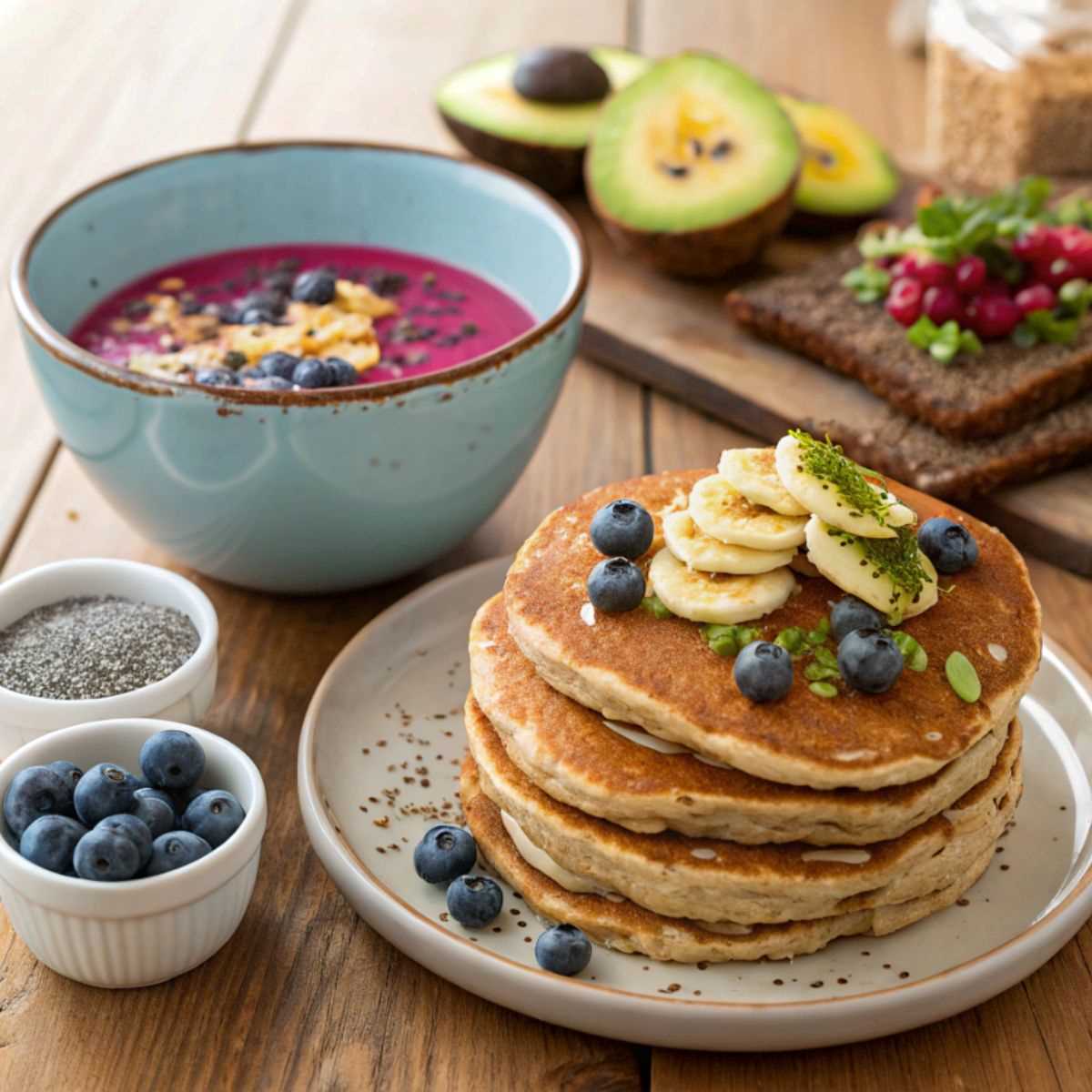
Starting the day with the right meal is essential for those with celiac disease, gluten sensitivity, or a preference for a gluten-free lifestyle. Moreover, it helps prevent uncomfortable symptoms while providing the energy needed to power through the morning.
Jump to:
- Understanding Gluten-Free Basics
- Gluten-Free Breakfast Staples
- Popular Gluten-Free Breakfast Items
- Popular Gluten-Free Breakfast Items
- Creative Ideas for a Gluten-Free Breakfast
- Benefits of a Gluten-Free Breakfast
- Tips for a Successful Gluten-Free Breakfast
- Common Myths About Gluten-Free Breakfasts
- Common Myths About Gluten-Free Breakfasts
- Conclusion
- Frequently Asked Questions (FAQs)
Understanding Gluten-Free Basics
Understanding the fundamentals of gluten and why it matters is key to a gluten-free breakfast. Whether you're avoiding gluten for health reasons or personal choice, this section will clarify the basics.
Wondering if sourdough is safe for a gluten-free diet? Find out in this comprehensive guide: Is Any Sourdough Bread Gluten-Free?.
What is Gluten?
Gluten is a protein found primarily in wheat, barley, and rye. It's what gives bread its chewy texture and helps the dough rise. While gluten is harmless for many, it can trigger adverse effects in people with:
- Celiac Disease: An autoimmune condition where gluten damages the small intestine.
- Non-Celiac Gluten Sensitivity: A condition causing symptoms like bloating, fatigue, and headaches without intestinal damage.
- Wheat Allergy: An allergic reaction to wheat proteins, including gluten.
Hidden gluten is a common problem, often lurking in items like flavored yogurts, granola, or breakfast sausages. Therefore, learning to identify these sources is crucial for maintaining a gluten-free diet.
Why Choose Gluten-Free?
Opting for a gluten-free breakfast can have several benefits, depending on individual health needs and preferences:
- Health Conditions: Avoiding gluten is non-negotiable for those with celiac disease or gluten intolerance.
- Improved Digestion: By eliminating gluten, many find relief from digestive issues like bloating or gas.
- Wellness Trend: Some people adopt a gluten-free diet for perceived health benefits, such as reduced inflammation or weight management, though these effects vary by individual.
Understanding why gluten-free is essential to you will guide your choices and make the transition smoother.
Gluten-Free Breakfast Staples
Creating a satisfying gluten-free breakfast starts with the right ingredients. Thankfully, there are also plenty of naturally gluten-free foods and gluten-free grain options to ensure variety and nutrition.
Naturally Gluten-Free Foods
Many whole foods are naturally gluten-free, making them a great foundation for any breakfast. Here are some staples to consider:
- Fruits and Vegetables: Fresh fruits, such as bananas, berries, oranges, and vegetables, such as spinach, tomatoes, and avocados, are nutrient-rich and versatile.
- Eggs: A breakfast classic, eggs are gluten-free and packed with protein. They’re perfect for omelets, scrambles, or sunny-side-up.
- Dairy Products: Milk, yogurt (unflavored), and cheese are gluten-free, though it’s important to check labels for added flavorings or thickeners that may contain gluten.
Gluten-Free Grains
Replacing traditional wheat-based grains is key to enjoying a wholesome gluten-free breakfast. Fortunately, there are plenty of nutritious alternatives:
- Quinoa: A protein-rich grain that works well in breakfast bowls or porridge.
- Oats (Certified Gluten-Free): Regular oats can be contaminated with gluten, so choose certified gluten-free options. Use them in oatmeal or granola.
- Buckwheat: Despite its name, buckwheat is gluten-free and perfect for pancakes or porridge.
- Millet: This mild-flavored grain is great for hot cereals or as a base for breakfast bowls.
These grains provide energy, fiber, vitamins, and minerals, keeping you full throughout the morning.
Popular Gluten-Free Breakfast Items
Gluten-free breakfasts don’t have to be dull or repetitive. With a little creativity, you can enjoy various delicious, nutrient-packed meals that fit your dietary needs.
Smoothies and Bowls
Smoothies and smoothie bowls are quick, versatile, and naturally gluten-free. Additionally, blending fruits, vegetables, and gluten-free add-ins can create a colorful, nutrient-dense breakfast.
- Ingredients to Include:
- Fruits: Bananas, berries, mangoes.
- Greens: Spinach, kale.
- Add-ins: Chia seeds, flaxseeds, nut butter.
- Example Recipe: A berry smoothie bowl topped with gluten-free granola, shredded coconut, and sliced almonds.
Smoothie bowls allow you to be creative with toppings, turning a basic smoothie into a hearty and satisfying meal.
Gluten-Free Pancakes and Waffles
Furthermore, you can enjoy classic breakfast favorites by using gluten-free flour like almond, coconut, or rice flour to make pancakes and waffles. With the right recipe, these can be as fluffy and delicious as their traditional counterparts.
For a tried-and-true recipe, check out this Gluten-Free Pancake Recipe: Fluffy Perfection
- Tips for Success:
- Combine multiple gluten-free flours for better texture.
- Use baking powder or soda to ensure fluffiness.
- Serving Suggestions:
- Top with fresh fruit, maple syrup, or a dollop of whipped cream.
Gluten-free pancake and waffle mixes are also widely available for a quicker option.
Egg-Based Breakfasts
Eggs are a staple of gluten-free diets due to their versatility and high protein content. Whether scrambled, poached, or baked, they pair perfectly with gluten-free sides.
- Ideas to Try:
- Omelets: Fill with spinach, mushrooms, and cheese.
- Frittatas: Add roasted vegetables and bake for a crowd-pleasing dish.
- Egg Muffins: Bake eggs in a muffin tin with veggies and sausage for a portable option.
Egg dishes can be easily customized to fit your taste and dietary preferences.
Gluten-Free Cereals
Additionally, many gluten-free cereal brands offer delicious options for a quick and easy breakfast. Look for those made from quinoa, millet, or certified gluten-free oats.
- Choosing the Best Cereals:
- Opt for low-sugar, whole-grain varieties.
- Pair with your choice of milk and fresh fruit for added nutrition.
Homemade gluten-free granola is another great alternative, allowing you to control the ingredients and sweetness.
Popular Gluten-Free Breakfast Items
Gone are the days when gluten-free meant boring or restrictive. Today, there’s an abundance of gluten-free breakfast options that are delicious, nutritious, and easy to prepare. Here are some popular choices to inspire your morning meals.
Smoothies and Bowls
Smoothies and smoothie bowls are versatile and naturally gluten-free. They’re quick to make and can be tailored to your taste preferences. Here’s how to create a perfect one:
- Base: Start with a gluten-free liquid like almond milk, coconut milk, or plain yogurt.
- Fruits: Add fresh or frozen fruits such as bananas, berries, mangoes, or pineapple.
- Boosters: Incorporate chia seeds, flaxseeds, or gluten-free protein powder for extra nutrition.
- Toppings: Transform your smoothie into a bowl by adding toppings like nuts, seeds, shredded coconut, or gluten-free granola.
Example: A berry smoothie bowl topped with sliced almonds, chia seeds, and shredded coconut makes a vibrant, nutrient-packed breakfast.
Gluten-Free Pancakes and Waffles
Who doesn’t love a stack of pancakes or crispy waffles in the morning? You can easily enjoy these breakfast classics by using gluten-free flours, such as:
- Almond flour.
- Coconut flour.
- Rice flour.
- Pre-made gluten-free pancake and waffle mixes.
Add vanilla extract, cinnamon, or mashed bananas to the batter to enhance the flavor. Serve with pure maple syrup, fresh fruit, or a dollop of whipped cream.
Egg-Based Breakfasts
Moreover, eggs are a versatile and naturally gluten-free ingredient that can be used in countless ways. Some popular gluten-free egg breakfasts include:
- Omelets: Packed with veggies, cheese, or meats for a filling start to the day.
- Scrambled Eggs: Pair with gluten-free toast or sautéed vegetables.
- Frittatas: A baked egg dish with spinach, mushrooms, and cheese ingredients.
These dishes are rich in protein, making them ideal for sustained energy throughout the morning.
Gluten-Free Cereals
Many cereal brands now offer gluten-free options catering to various tastes. Here’s how to choose the best one:
- Look for certified gluten-free labels to avoid contamination.
- Choose whole-grain options like quinoa flakes or gluten-free granola for added nutrients.
- Check for added sugars and prioritize cereals with minimal processing.
Pair your cereal with a splash of almond or oat milk and fresh fruit for a satisfying breakfast.
Creative Ideas for a Gluten-Free Breakfast
These creative breakfast ideas will inspire you if you want to add variety and excitement to your gluten-free mornings. Moreover, from innovative toast alternatives to delicious baked goods, these options prove that gluten-free breakfasts can be both fun and flavorful.
Toast Alternatives
Who says toast is off the table for gluten-free diets? With a little creativity, you can enjoy this breakfast staple in new ways:
- Gluten-Free Bread: Many brands offer gluten-free bread made from almond flour, rice flour, or other gluten-free grains. Toast it and top it with:
- Avocado and a sprinkle of salt and pepper.
- Nut butter with sliced bananas and a drizzle of honey.
- Sweet Potato Toast: Thinly slice sweet potatoes and toast them in the oven or toaster. For a nutrient-dense twist, top with your favorite spreads and add-ons.
Breakfast Wraps
Wraps can be a quick and satisfying breakfast option when using gluten-free alternatives like:
- Gluten-Free Tortillas: Fill with scrambled eggs, veggies, and cheese for a breakfast burrito.
- Lettuce Wraps: Use large leaves to create a fresh, low-carb wrap with smoked salmon, cream cheese, and cucumber.
- Nori Wraps: These seaweed sheets are perfect for a sushi-inspired breakfast filled with eggs, avocado, and veggies.
Muffins and Pastries
Baked goods might seem off-limits on a gluten-free diet, but they’re not! You can enjoy breakfast muffins, scones, or pastries with gluten-free flour and some creativity. Here’s how:
- Muffins: Use almond flour, coconut flour, or a gluten-free all-purpose mix to bake muffins. Popular flavors include:
- Blueberry.
- Banana walnut.
- Chocolate chip.
- Scones: Combine gluten-free flour with butter, eggs, and sweetness for a flaky pastry.
- Store-Bought Options: Many bakeries and brands now offer pre-made gluten-free pastries if you’re short on time.
Savory Breakfast Bowls
Breakfast bowls are a hearty and customizable option. Start with a gluten-free base and layer in your favorite toppings:
- Base Options: Quinoa, roasted sweet potatoes, or gluten-free grains.
- Toppings: Eggs, sautéed greens, avocado slices, and roasted vegetables.
- Seasoning: Add flavor with herbs, spices, or gluten-free hot sauce.
Benefits of a Gluten-Free Breakfast
Starting your day with a gluten-free breakfast isn’t just a dietary requirement for those with sensitivities—it can also provide a range of health and lifestyle benefits. Let’s explore how going gluten-free in the morning can positively impact your well-being.
Improved Digestion
For individuals with gluten intolerance or celiac disease, consuming gluten can lead to bloating, cramps, and other digestive issues. Additionally, a gluten-free breakfast eliminates this trigger, promoting better gut health and reducing discomfort.
- Example: Swapping traditional bread for gluten-free toast or oats can prevent post-breakfast bloating.
- Bonus: Many gluten-free breakfasts include whole foods like fiber-rich fruits and vegetables that support healthy digestion.
Boosted Energy Levels
A gluten-free breakfast often prioritizes nutrient-dense, whole ingredients over processed foods. This shift can result in sustained energy levels throughout the morning.
- Gluten-free grains like quinoa and certified gluten-free oats provide complex carbohydrates that release energy slowly.
- High-protein options like eggs or Greek yogurt support muscle recovery and keep hunger at bay.
Diverse Nutritional Profile
By embracing naturally gluten-free ingredients, you’ll likely expand your nutritional intake. Many gluten-free breakfasts incorporate a variety of food groups, offering a balanced mix of vitamins, minerals, and antioxidants.
- Fruits and Vegetables: Packed with vitamins A and C, potassium, and fiber.
- Nuts and Seeds: Rich in healthy fats and essential nutrients like magnesium and zinc.
- Alternative Flours: Almond and coconut flour provide more protein and healthy fats than wheat-based flour.
Healthier Food Choices
A gluten-free diet encourages mindfulness when choosing breakfast items. Since many processed foods contain gluten, you’re more likely to opt for whole, minimally processed alternatives, which can contribute to overall wellness.
Tips for a Successful Gluten-Free Breakfast
Transitioning to gluten-free mornings doesn’t have to be challenging. By following these tips, you can enjoy a seamless, satisfying, and worry-free start to your day.
For more ideas, explore these Gluten-Free Fast Food Options and DIY Recipes.
Reading Labels Carefully
Many packaged foods contain hidden gluten, even if they don’t seem obvious. To avoid accidental exposure:
- Look for products labeled “certified gluten-free.”
- Be cautious of terms like "modified food starch" or "natural flavors," which sometimes contain gluten.
- Avoid cross-contamination warnings, especially with oats, cereals, or snacks.
Pro Tip: Keep a list of safe brands and regularly check for updated ingredient information.
Meal Prepping
Meal prepping makes mornings easier and ensures you always have gluten-free options. Here’s how to get started:
- Batch Cook: Prepare gluten-free pancakes, muffins, or granola over the weekend to enjoy throughout the week.
- Pack Smoothie Bags: Pre-portion fruits, seeds, and protein powder into freezer bags for quick smoothie assembly.
- Stock the Pantry: Keep staples like gluten-free bread, oats, and nut butter readily available.
Avoiding Cross-Contamination
Cross-contamination is a major concern for those with celiac disease or gluten sensitivities. To maintain a truly gluten-free kitchen:
- Use separate cutting boards, toasters, and utensils for gluten-free cooking.
- Store gluten-free items in sealed containers away from gluten-containing foods.
- Educate family members about the proper handling of gluten-free products.
Experimenting with Recipes
The variety of gluten-free breakfast recipes is endless. Don’t be afraid to experiment with new flavors and textures to keep things exciting. Try:
- Swapping traditional flour for cassava or tapioca flour in pancakes.
- Incorporating unexpected ingredients like zucchini or sweet potatoes into breakfast dishes.
- Testing different gluten-free grains, such as teff or sorghum.
Dining Out Safely
If you’re grabbing breakfast on the go, take extra precautions to avoid gluten exposure:
- Look for restaurants with gluten-free menus or options.
- Confirm with the staff that your meal is prepared separately to prevent cross-contamination.
- Stick to naturally gluten-free dishes, such as omelets or fruit bowls.
Craving something quick and safe to eat out? This Taco Bell Gluten-Free Guide provides great insight into gluten-free options.
Common Myths About Gluten-Free Breakfasts
Plenty of misconceptions about gluten-free breakfasts can make the lifestyle seem more challenging or limiting than it is. Let’s bust some of these myths and set the record straight.
Contrary to popular belief, not all sourdough bread is gluten-free. Learn more in this detailed article: Is All Sourdough Bread Gluten-Free?.
Myth 1: Gluten-Free is Always Healthier
While gluten-free breakfasts can be healthy, not all gluten-free products are inherently better for you. Many gluten-free packaged foods are highly processed and can contain added sugars or unhealthy fats.
The Reality: To reap the nutritional benefits, focus on naturally gluten-free foods, such as fruits, vegetables, eggs, and whole grains.
Myth 2: Gluten-Free Breakfasts Are Bland and Boring
The idea that gluten-free breakfasts lack flavor or variety couldn’t be further from the truth. The options are endless, from savory egg dishes to sweet pancakes made with almond flour.
The Reality: By experimenting with new ingredients and recipes, gluten-free breakfasts can be just as delicious—if not more so—than traditional ones.
Myth 3: Gluten-Free Means Limited Options
Many people believe that removing gluten drastically limits your choices, leaving you stuck with the same meals every morning. However, with the growing popularity of gluten-free diets, the availability of products and recipes has expanded greatly.
The Reality: Thanks to many alternatives, gluten-free diners can enjoy everything from toast and waffles to wraps and muffins.
Myth 4: Gluten-Free is Only for People With Celiac Disease
Some think that gluten-free diets are only beneficial for those diagnosed with celiac disease. While it's essential for people with this condition, many others can also benefit.
The Reality: Those with non-celiac gluten sensitivity or individuals seeking a more diverse diet often find gluten-free breakfasts helpful for improving digestion and reducing bloating.
Myth 5: Gluten-Free is Expensive
Gluten-free products can sometimes be pricier, but a gluten-free breakfast doesn’t have to break the bank.
The Reality: Opt for budget-friendly, naturally gluten-free ingredients like oats (certified gluten-free), eggs, seasonal fruits, and vegetables. Preparing meals at home also keeps costs low.
Common Myths About Gluten-Free Breakfasts
Plenty of misconceptions about gluten-free breakfasts can make the lifestyle seem more challenging or limiting than it is. Bust some of these myths and set the record straight.
Myth 1: Gluten-Free is Always Healthier
While gluten-free breakfasts can be healthy, not all gluten-free products are inherently better for you. Many gluten-free packaged foods are highly processed and can contain added sugars or unhealthy fats.
The Reality: To reap the nutritional benefits, focus on naturally gluten-free foods, such as fruits, vegetables, eggs, and whole grains.
Myth 2: Gluten-Free Breakfasts Are Bland and Boring
The idea that gluten-free breakfasts lack flavor or variety couldn’t be further from the truth. The options are endless, from savory egg dishes to sweet pancakes made with almond flour.
The Reality: By experimenting with new ingredients and recipes, gluten-free breakfasts can be just as delicious—if not more so—than traditional ones.
Myth 3: Gluten-Free Means Limited Options
Many people believe that removing gluten drastically limits your choices, leaving you stuck with the same meals every morning. However, with the growing popularity of gluten-free diets, the availability of products and recipes has expanded greatly.
The Reality: Thanks to many alternatives, gluten-free diners can enjoy everything from toast and waffles to wraps and muffins.
Myth 4: Gluten-Free is Only for People With Celiac Disease
Some think that gluten-free diets are only beneficial for those diagnosed with celiac disease. While it's essential for people with this condition, many others can also benefit.
The Reality: Those with non-celiac gluten sensitivity or individuals seeking a more diverse diet often find gluten-free breakfasts helpful for improving digestion and reducing bloating.
Myth 5: Gluten-Free is Expensive
Gluten-free products can sometimes be pricier, but a gluten-free breakfast doesn’t have to break the bank.
The Reality: Opt for budget-friendly, naturally gluten-free ingredients like oats (certified gluten-free), eggs, seasonal fruits, and vegetables. Preparing meals at home also keeps costs low.
Conclusion
From naturally gluten-free staples like eggs, fruits, and vegetables to innovative recipes using gluten-free grains and flour, gluten-free breakfasts offer delicious, nutritious, and creative options that seamlessly cater to various dietary needs and preferences, ensuring there’s no shortage of variety to keep mornings exciting.
By understanding the basics of gluten-free eating, embracing mindful choices, and experimenting with diverse recipes, anyone can enjoy a satisfying and balanced start to their day. Whether managing a health condition like celiac disease or simply exploring gluten-free living, breakfast can be a fulfilling and worry-free meal.
Start your day with gluten-free breakfasts that nourish your body, energize your mornings, and excite your taste buds!
Frequently Asked Questions (FAQs)
Yes, oatmeal can be gluten-free if it’s certified as such. Regular oats are often cross-contaminated with gluten during processing, so choose brands labeled as gluten-free.
Quick options include smoothies, gluten-free toast with avocado, hard-boiled eggs, fruit parfaits with gluten-free granola, or a banana with nut butter.
Absolutely! Kids can enjoy gluten-free pancakes, cereal with milk, scrambled eggs with fruit, or mini muffins made from gluten-free flour.
Stick to naturally gluten-free foods like eggs, seasonal fruits, and vegetables. Buy grains like certified gluten-free oats or rice in bulk and prepare meals at home instead of purchasing pre-packaged items.
A nutrient-dense and portion-controlled gluten-free breakfast can support weight loss. Focus on whole foods like eggs, fruits, and vegetables while avoiding heavily processed gluten-free products.

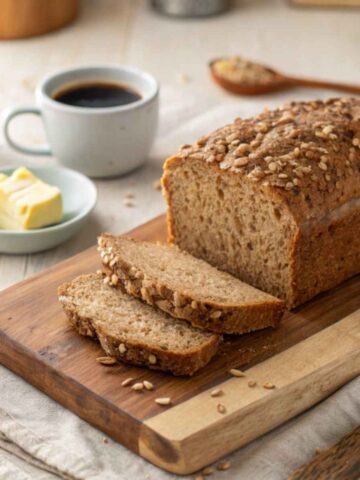
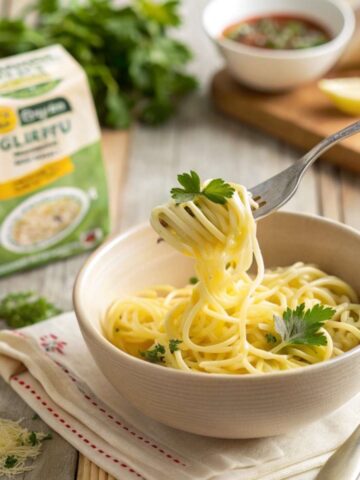
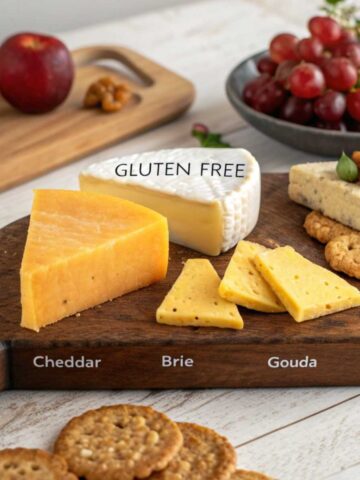
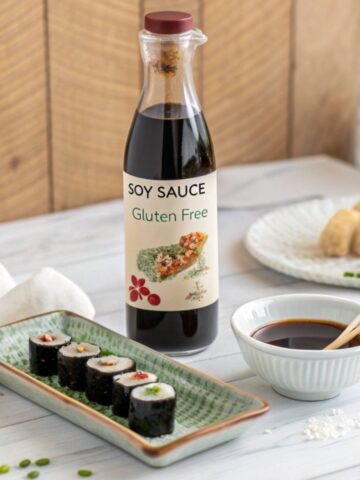
Leave a Reply